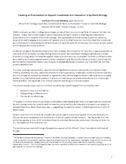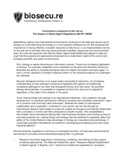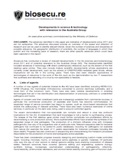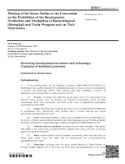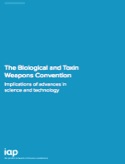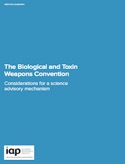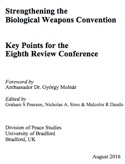
publications

photocredit: University Freiburg, AG Reski Ralf_Reski
Used under a Creative Commons License, see: http://en.wikipedia.org/wiki/File:Bioreaktor_quer2.jpg
Co-authored with experts from the Federal Bureau of Investigation, this background information document was fed into the UK Synthetic Biology Leadership Council and US National Academies’ Forum on Synthetic Biology entitled “Creating an Environment to Support Investment and Innovation in Synthetic Biology” which took place in London, UK 28-29 October 2014. The Summary Report of the forum, including the full background information document, was published online in January 2015
Safeguarding the bioeconomy
Biosecure produces a range of original research and analysis for a wide variety of partners. Wherever possible, we are committed to making this available to the widest possible audience.
Comments in response to a public call by the Office of of Science and Technology Policy in which we focus on three shifts in the technical and policy environment necessitating a different approach in the future: the increasing digitization of biology; the de-linking of function and taxonomy; and the increasingly international nature of biotechnology. Three avenues of change will help create national and international frameworks conducive to safely and securely using biology as a manufacturing technology.
The Impact of the Select Agent Regulations
Commissioned by the UK Ministry of Defence, this report addresses implications from developments relevant to lists of agents, production technologies, stockpiling & delivery technologies, as well as intangible technologies. It includes 5 concrete recommendations for keeping pace with the digitization of the life sciences & biotechnology, the decoupling of design, development & manufacturing, as well as the industrialization of the life sciences & biotechnology.
S&T Developments & Export Controls
Commissioned by the Swiss Ministry of Foreign Affairs, and annexed to their working paper at the 2015 Meeting of States Parties to the Biological Weapons Convention, this review covers 18 existing and proposed mechanisms. It provides comparative analysis of processes from other disarmament settings, as well as international fora impacted by the life sciences, ranging from disaster response, though climate change and the environment, to human and animal health.
Dedicated processes for reviewing S&T developments
Commissioned by the Royal Society in the UK as part of their efforts to support the global scientific communities’ contribution to the 8th BWC Review Conference in 2016, Biosecure identified hundreds of relevant developments and provided analysis of their implications. This report details advances that could be of benefit for the treaty, and those which could be applied for prohibited purposes.
Implications of S&T advances for the BWC
Commissioned by the Royal Society in the UK as part of their efforts to support the global scientific communities’ contribution to the 8th BWC Review Conference in 2016, Biosecure produced a background document covering: current arrangements; good practice in science advice; parameters and considerations for reviewing developments in S&T; and proposals for a dedicated process for the BWC.
A structured S&T review process for the BWC
Biosecure provided input to this briefing book on: tacit knowledge; Dual-Use Research of Concern and Gain-of-Function Research; CRISPR-based gene editing tools; the Ebola Virus Disease public health emergency of international concern; the IAP workshop on trends in science and technology; and biotechnology as a target of biological weapons.
Key Points for the 8th BWC Review Conference
Commissioned by the Royal Society in the UK as part of their efforts to support the global scientific communities’ contribution to the 8th BWC Review Conference, Biosecure produced a summary report of a roundtable held in April 2016. The report provides possible answers to the questions: Why? Who? What? How? When? and Where? It also considers how models then tabled by states answer these questions.
Considerations for a BWC science advice mechanism
